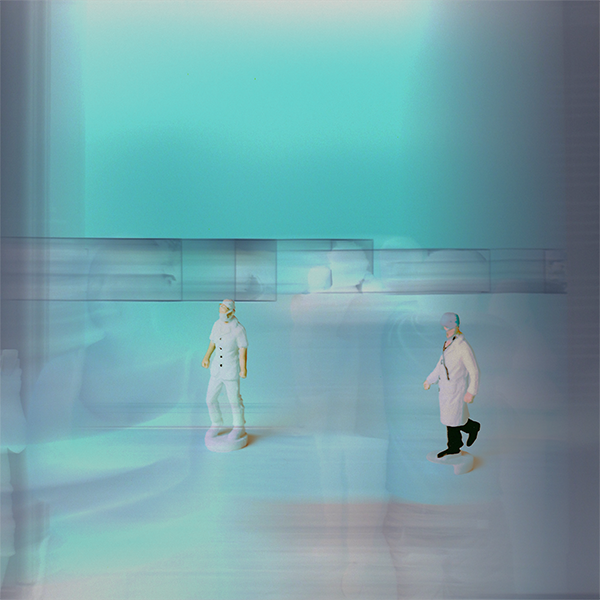How Advent Teaches the Art of Mixed Emotions
When so much of our communication now happens in a forum which allows us only to choose between “Like,” “Love,” “HaHa,” “Wow,” “Sad,” or “Angry,” there’s not much room for emotional nuance. We’re not offered the option of choosing “Wow and Sad” or “Love and Angry.” How can we learn to say both “My heart is breaking” and “Jesus is my hope”?
The reality is that much of life brings mixed emotions. The more we embrace this reality the more we’ll have space for one another: we’ll learn to juggle both “I’m frustrated with you” and “I love you.” The more we embrace the reality of mixed emotions, the more we’ll know the heart of God: he both grieves and rejoices more than we ever could.
God both grieves and rejoices more than we ever could. Share on XAdvent and Mixed Emotions
I’ve learned this from Advent. It wasn’t until my church started following the lectionary two years ago that I began to understand the power of this season. Until then I felt a little guilty that I didn’t always feel happy: if Jesus has redeemed all things, why is my heart heavy? So I’ve come to love the permission Advent gives us to have hope and longing all at once, to celebrate what was once long-awaited and then given and what continues to be long-awaited.
Walter Brueggemann, in The Prophetic Imagination, brilliantly describes this juggling:
“The riddle and insight of biblical faith is the awareness that only anguish leads to life, only grieving leads to joy, and only embraced endings permit new beginnings.”
If this is the case, there is something necessary about living in the uncomfortable space which both grieves what is and hopes for what can be. We’d much rather have tidy emotions. We don’t like how these feelings blur into one another, defying simple description. We wish our heart wasn’t at war with itself. And yet we, as followers of Christ, are called to this awkward place.
Jesus’ Mixed Emotions
We’re in good company. As we see, in Revelation, we worship One who embodies realities that seem to be incompatible. In Revelation 5 we’re introduced to the Lamb, who stands as if slain. He bears the marks of slaughter and yet here he is, standing. He knows suffering and victory—both at once. He has died and is alive. He is alive but he once died. He knows the brokenness of this life yet he exists beyond this life, allowing him to embody the two sides of our experience.
Throughout Revelation we see these two realities continuing to co-exist in various scenes and characters. We are overcome and then we become overcomers, over and over again. Living in this reality requires an expanding heart which can hold both the pain and the hope. Not to switch from one to the other but to allow these interwoven truths to co-exist in us. Our joy drives our longing. Our longing is bearable because of our joy.
Becoming Present with One Another
When we’re able to exist in this space and trust that our hearts will not burst, we’re able to be present with one another. We’re able to stop in the middle of what is a good day for us, to hear the broken heart of another and carry both our own joy and the pain of their story. From that place we can say “I hurt for you. Even though my life is peaceful.” We’re able to see famine and war in the news and say “Although I can’t even imagine it, I grieve for their grief” even as we drive in our temperature-controlled cars to a stable job. We’re able to hear the perspectives of others and say “Although it’s not my story, I can make room for your story.” We’re able to gather around a Christmas dinner table or communion table and say “Your words make me angry AND I love you.” We learn to stop saying “but,” which only serves to cancel out one side of truth, and instead find a way to say “and.”
We fear our hearts might burst to, at the same time carry gratitude and frustration and longing and anxiety and hope. When we have discovered we cannot bear this burden alone, we finally turn to God, unburden our warring hearts to him and here we learn something new—that our hearts mirror his. We find solidarity to discover that he also sees all that is lacking and grieves for all that is broken. We come to see that whatever heaviness we carry is only a tiny glimpse of the weight he bears. For he sees more that is broken and has a better vision of what could be. He loves more than we love and longs deeper than we long. It’s his creation that’s not what he intended it to be, his creatures who suffer.
Jesus sees more that is broken and has a better vision of what could be. Share on XAnd yet, as we come to know the mixed feelings of the heart of God, we discover a strange reality: that for Him the balance is tipped eternally toward joy. As much as his grief weighs heavier than ours, he is driven on by a greater joy. We’re reminded that he knew all the grief before he even created this world. And yet something greater drove him on to create it anyway. And that same thing drives him on through this story of mixed experiences, mixed emotions, finding every opportunity to make things new, holding always before him the vision he has for his Creation.
Thankfully we also are also given a glimpse of that vision in Revelation. Throughout the book we have many expressions of this mixed experience which leads to mixed emotion. And yet, as the revelation unfolds, we find something begins to change. The suffering, the losing, the weeping become less and less a part of our story. And then we reach the moment when He wipes every tear from our eyes. When he promises no more darkness, no more curse, no more death, mourning or pain. No more mixed emotions. Only pure joy. Only absolute, unadulterated peace.
Until that day, we hold the hope in our hearts. Along with everything else.



